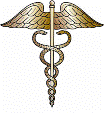
United States Public Health Resources
Date of this Version
2008
Citation
Cancer 2008;113(5 suppl):1179–90; DOI 10.1002/cncr.23726
Abstract
BACKGROUND. Colorectal cancer (CRC) is a leading cause of cancer morbidity and mortality for American Indians and Alaska Natives (AI/ANs), but misclassification of race causes underestimates of disease burden.
METHODS. The authors compared regional differences in CRC incidence, stage at diagnosis, and anatomic distribution between AI/ANs and non-Hispanic whites (NHWs). To reduce misclassification, data from the National Program of Cancer Registries; the Surveillance, Epidemiology, and End Results Program; and the Indian Health Service (IHS) were linked. The analysis was limited to the 56% of AI/ AN who live in IHS Contract Health Service Delivery Areas.
RESULTS. From 1999 to 2004, the overall incidence rate (per 100,000 persons per year) of CRC was 9% lower in the AI/AN population (46.3) than in the NHW population (50.8). However, AI/AN CRC incidence rates varied nearly 5-fold regionally, from 21 in the Southwest to 102.6 in Alaska. Compared with NHW rates, AI/AN rates were significantly higher in Alaska (rate ratio [RR], 2.03), the Northern Plains (RR, 1.39), and the Southern Plains (RR, 1.16) but were lower in the Pacific Coast (RR, 0.80), the East (RR, 0.65), and the Southwest (RR, 0.45). AI/ ANs were diagnosed more often with advanced CRC than with localized CRC (RR, 1.92) compared with NHWs (RR, 1.48). Females more often had proximal CRC among both the AI/AN population (females, 40.1%; males, 33.5%) and the NHW population (females, 50.1%; males, 40.3%), although AI/ANs had a higher proportion of distal cancers overall.
CONCLUSIONS. CRC incidence rates in AI/AN populations varied dramatically between regions. Efforts are needed to make CRC screening a priority, overcome barriers to endoscopic screening, and to engage AI/AN communities in culturally appropriate ways to participate in prevention and early detection programs.

